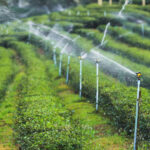Feeding livestock is one of the most critical aspects of farming, directly impacting animal health, productivity, and profitability. However, many South African farmers inadvertently make mistakes when it comes to their livestock’s diet, leading to poor health, reduced yield, and increased costs. This article explores 10 common mistakes that farmers should avoid to ensure their livestock thrive.
1. Not Providing Adequate Water
Water is often overlooked in livestock feeding plans, but it’s just as important as food. Livestock need clean, fresh water to digest their food and regulate their body temperature. Inadequate water intake can result in dehydration, reduced feed intake, and poor digestion, leading to health problems and decreased production.
Solution: Ensure that animals have access to clean water at all times. Regularly clean water troughs and ensure they are not obstructed.
2. Feeding the Same Type of Feed All Year Round
Relying on the same feed throughout the year can lead to nutrient imbalances. Animals’ nutritional requirements change with seasons, especially in regions like South Africa, where seasonal changes can significantly affect pasture quality.
Solution: Adjust the feed based on seasonal changes. In the dry season, supplement grazing with hay or silage. During the rainy season, fresh pasture can provide more nutrition.
3. Overfeeding or Underfeeding
Both overfeeding and underfeeding can negatively affect livestock. Overfeeding leads to obesity, which can cause joint problems and reduce productivity, while underfeeding results in poor growth, low milk yield, and lower reproductive success.
Solution: Follow the recommended feeding guidelines based on the type, size, and age of the livestock. Regularly monitor their body condition and adjust portions accordingly.
4. Failing to Balance Rations
A balanced diet is essential for livestock to meet their energy, protein, and mineral requirements. Failing to balance the ration can result in deficiencies, leading to weak immune systems, poor weight gain, and even death in extreme cases.
Solution: Consult with a nutritionist or use a reliable feed calculator to ensure a proper balance of protein, carbohydrates, fats, vitamins, and minerals. Incorporate forage and concentrate feeds as needed.
5. Feeding Low-Quality Forage
While pasture and forages make up a significant portion of many livestock diets, low-quality forages, such as those with high fiber content and low nutritional value, can lead to poor digestion and reduced growth.
Solution: Evaluate the nutritional quality of available pasture or hay. If it is low in quality, supplement with better-quality forages or concentrate feeds to meet your livestock’s needs.
6. Ignoring Animal-Specific Dietary Needs
Different animals have different dietary needs depending on their age, breed, and stage of production. For example, dairy cows, growing calves, and pregnant ewes have different nutritional requirements. Providing the same feed for all animals is a mistake that can compromise productivity.
Solution: Tailor the diet to the specific needs of each animal group. For instance, lactating cows need more energy and protein, while young animals require more minerals and vitamins for growth.
7. Not Adjusting Diets for Breeding and Pregnancy
Pregnant or breeding animals have increased nutritional demands. If their diet is not adjusted, they may experience complications during pregnancy or birth, and the offspring may be weak or underdeveloped.
Solution: Increase the nutritional intake of pregnant or breeding animals, especially in terms of protein, energy, and minerals like calcium and phosphorus. A good diet will ensure healthy pregnancies and strong offspring.
8. Feeding Moldy or Contaminated Feed
Feeding moldy or contaminated feed can introduce toxins into the livestock’s system, leading to illness or even death. This is particularly risky when storing feeds for long periods, especially in humid climates.
Solution: Inspect feed regularly for signs of mold or contamination. Proper storage conditions, such as keeping feed in dry, well-ventilated areas, can help prevent this problem.
9. Not Monitoring Feed Intake
Some farmers may not pay attention to how much their livestock are eating, which can lead to underfeeding or overfeeding. Not monitoring intake can also lead to unnoticed feed wastage, which affects profitability.
Solution: Observe the animals’ eating habits regularly. If you notice reduced feed intake, it may indicate health issues or the need to adjust the feed. Use automatic feeders or feeding systems that help monitor the intake.
10. Not Considering Local Feed Availability
Feeding livestock with imported or expensive feeds without considering local, cheaper alternatives can quickly drain a farmer’s resources. In South Africa, there are often locally available feeds, such as maize, lucerne, and local grasses, that can be used effectively.
Solution: Research local feed options and incorporate them into the livestock diet. Using locally sourced feed not only reduces costs but also supports local agriculture.
Feeding livestock is a critical component of successful farming in South Africa. By avoiding these common mistakes, farmers can enhance animal health, productivity, and profitability. Regularly reassessing feed quality, ensuring proper nutrition, and adjusting diets for seasonal and individual needs are all key to maintaining a healthy and productive livestock herd.







